




- BRNN
- BRI News
- BRNN News
- Database
Official Documents Polices and Regulations
Inter-government Documents International Cooperation BRI Countries
Business Guide Economic Data BRI Data
Trade
Investment Projects Latest projects
Cases - Content Pool
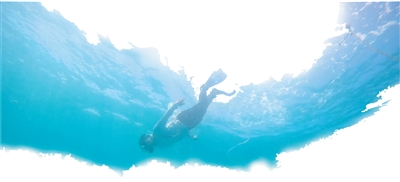
Chen Hong dives underwater to plant corals in waters near an island off Lingshui Li Autonomous County in south China's Hainan Province on June 24, 2025. (Photo/Yang Junfeng)
At nearly 60 years old, Chen Hong, director of the Hainan South China Sea Institute of Tropical Ocean in south China's Hainan Province, has devoted more than three decades to coral research.
Over the years, Chen and his team have mastered the techniques of asexual coral reproduction, positioning China at the forefront of coral survival rates in the world.
On June 24, on an island in Lingshui Li Autonomous County of Hainan, Chen was adjusting a specially designed coral seedbed on a floating platform. The 3-meter-long "seedbed frame," constructed from stainless steel with white buoyancy balls attached to its 1-meter-wide "headboard," serves as his primary tool for underwater "afforestation."
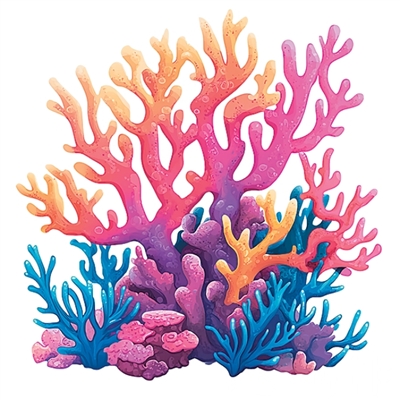
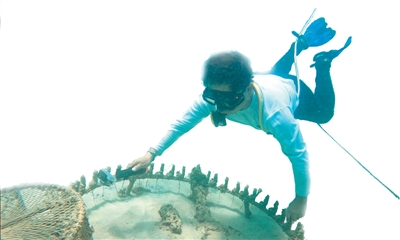
Chen Hong checks on the growth of corals underwater. (Photo/Yang Junfeng)
Each coral is fixed to the seedbed using specialized cement. Placing these seedbeds on the ocean floor completes the first step in coral planting.
Chen vividly recalls how many people initially dismissed his proposal for artificial coral cultivation as pure fantasy. Every step of the coral cultivation process proved extraordinarily challenging.
"First, we had to understand the causes of coral disease and death, as well as the growth patterns of coral colonies, before gradually exploring coral restoration and protection techniques," Chen said.
A good start requires high-quality coral, and success depends on survival rates, according to him.
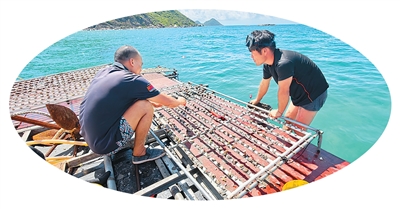
Staff members use specialized cement to fix corals to a specially designed coral seedbed. (Photo/Yang Junfeng)
Growing corals on the seafloor is no easy task. The process involves binding corals to a coral frame along with a net, then diving underwater with the net to position it over a reef. The coral frame must be firmly secured to the reef using steel rods, ensuring that even strong waves cannot easily sweep away the corals.
In areas where no natural reefs exist, artificial coral reefs are installed to support cultivation.

Photo shows fixed corals. (Photo/Yang Junfeng)
Corals are often referred to as the "tropical rainforests" of the ocean. Coral colonies provide essential habitats for marine fish, shellfish, and algae, forming the crucial foundation of coastal ecosystems.
Chen aims to create a vibrant "underwater rainforest" throughout the waters surrounding Hainan Island.
Currently, his artificial coral cultivation has scaled up exponentially. In 2013, Chen proposed an ambitious plan to grow 1 million artificially propagated corals across the major reefs surrounding Hainan Island.
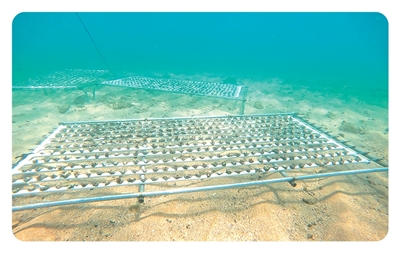
Photo shows coral seedbeds placed in waters near an island off Lingshui Li Autonomous County in south China's Hainan Province on June 24, 2025. (Photo/Yang Junfeng)
Through more than a decade of dedicated effort, Chen has successfully cultivated over 100 coral species. Additionally, he has established a comprehensive coral gene bank.
So far, Chen has planted more than 700,000 corals in the waters surrounding Sanya city in Hainan.

Photo shows the demonstration site for the breeding of corals on Fenghuang Island in Sanya city, south China's Hainan Province, on June 25, 2025.
In recent years, Hainan has consistently promoted science-based conservation and restoration of coral reef ecosystems, enhancing the diversity, stability, and sustainability of the marine ecosystem.
An increasing number of research teams and environmental organizations now collaborate to safeguard coral reefs. With emerging technologies such as drones and underwater robots being applied to coral reef protection and restoration, technological innovation is injecting new vitality into these "tropical rainforests" of the sea.
"With strong government support and a growing social consensus on coral protection, I'm confident we can continue 'growing' corals," Chen said.

Tel:86-10-65363107, 86-10-65368220, 86-10-65363106